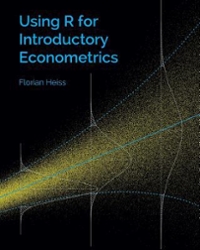Question
Sophia Corporation plans to import and sell high definition television sets in both the United States and Mexico. All TV sets are made in Malaysia
- Sophia Corporation plans to import and sell high definition television sets in both the United States and Mexico. All TV sets are made in Malaysia and shipped to North America. Therefore, shipping and handling costs for all sets sold in the US and Mexico may be considered to be the same. The price elasticity of demand for these TV sets are estimated to be (-1.5) in the United States and (-4) in Mexico. The marketing manager suggests the selling unit price of $3,000 in the US and $1,500 in Mexico.
A) If the firm wants to maximize profit, is this price mix optimal? Why?
B) Distributors in Mexico inform the headquarters that due to competition from Southeast Asian countries, the company has no pricing power in Mexico and accordingly this market should be considered perfectly competitive. What change (if any) in prices should the company introduce in both the US and Mexican markets?
2.Klimi is a street vendor in New York City who buys roses for $1 each and sells them to the public. During the day, he charges $2 per rose. However, during the evening hours when he goes to restaurants, he sells the roses for $3 each. What is this action called? Why is he doing it? Why is he able to do it?
3.Kristen Amusement Park faces two distinct demand curves. The first represents the demand by children under fifteen and the second pertains to other customers. These demands, along with their respective marginal revenues are given as:
P1 = 2 - 0.001Q1
MR1 = 2 - 0.002Q1
P2 = 20 - 0.01Q2
MR2 = 20 - 0.02Q2
where Q1 = number children under fifteen entering the park each day, Q2 = number of other customers entering the park each day. The marginal cost of each customer in both categories is the same and given as: MC = 1 + 0.004(Q). Assuming profit-maximizing behavior:
A) Calculate the number of each type of customers that enter the park daily (round up your number to the nearest feasible number).
B) Calculate the optimal price to be charged in each sub-market.
C) Calculate the parks' daily total revenue.
Step by Step Solution
There are 3 Steps involved in it
Step: 1

Get Instant Access to Expert-Tailored Solutions
See step-by-step solutions with expert insights and AI powered tools for academic success
Step: 2

Step: 3

Ace Your Homework with AI
Get the answers you need in no time with our AI-driven, step-by-step assistance
Get Started


